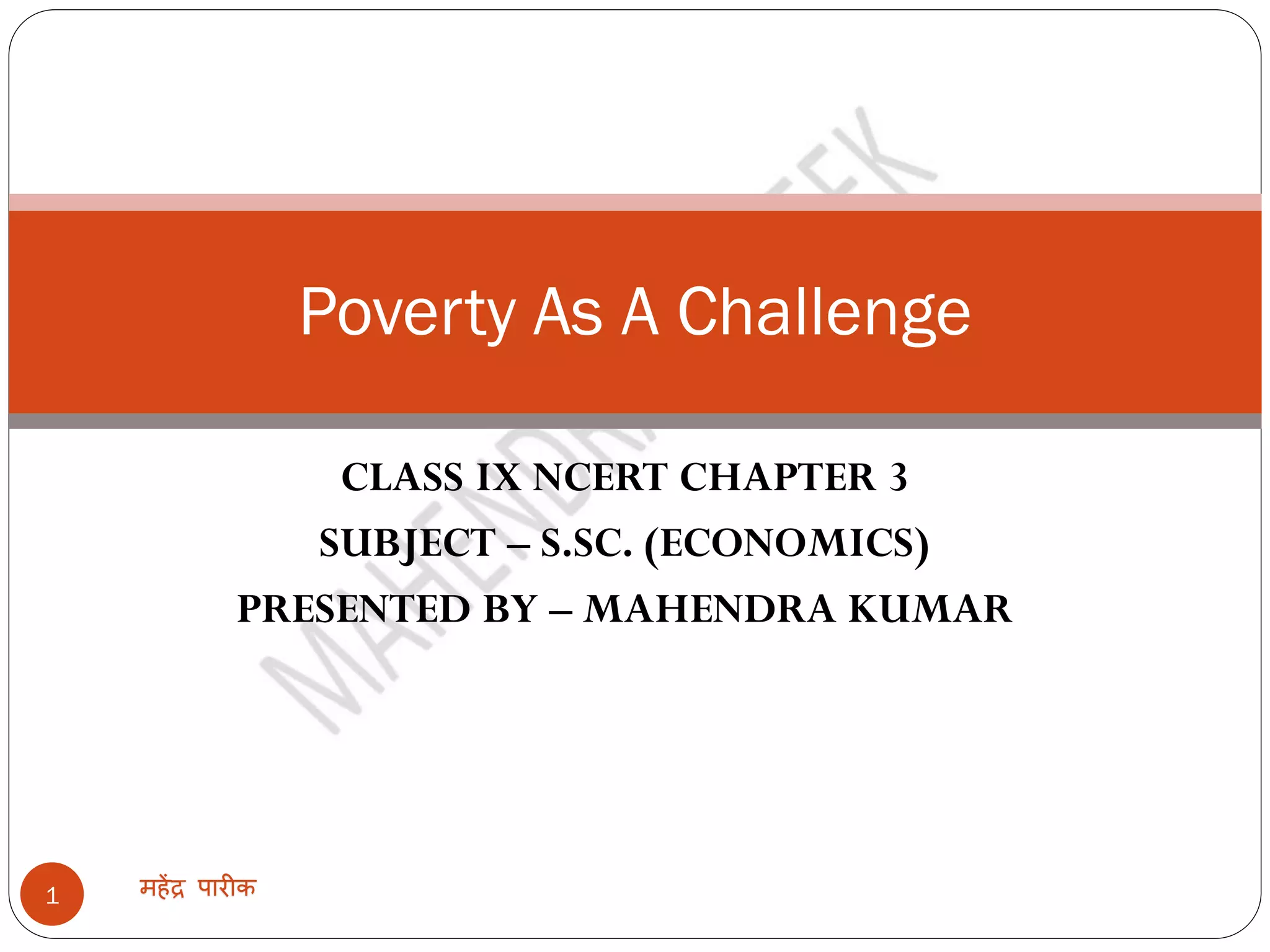The document discusses the pervasive issue of poverty in India, highlighting that approximately 270 million people live in poverty, making it the country with the largest concentration of the poor. It details case studies of individual experiences of poverty in urban and rural settings, identifies contributing factors such as unemployment and social exclusion, and outlines various poverty alleviation programs and strategies. Additionally, it emphasizes the need for targeted anti-poverty initiatives and economic growth to improve living conditions and reduce poverty levels.


































